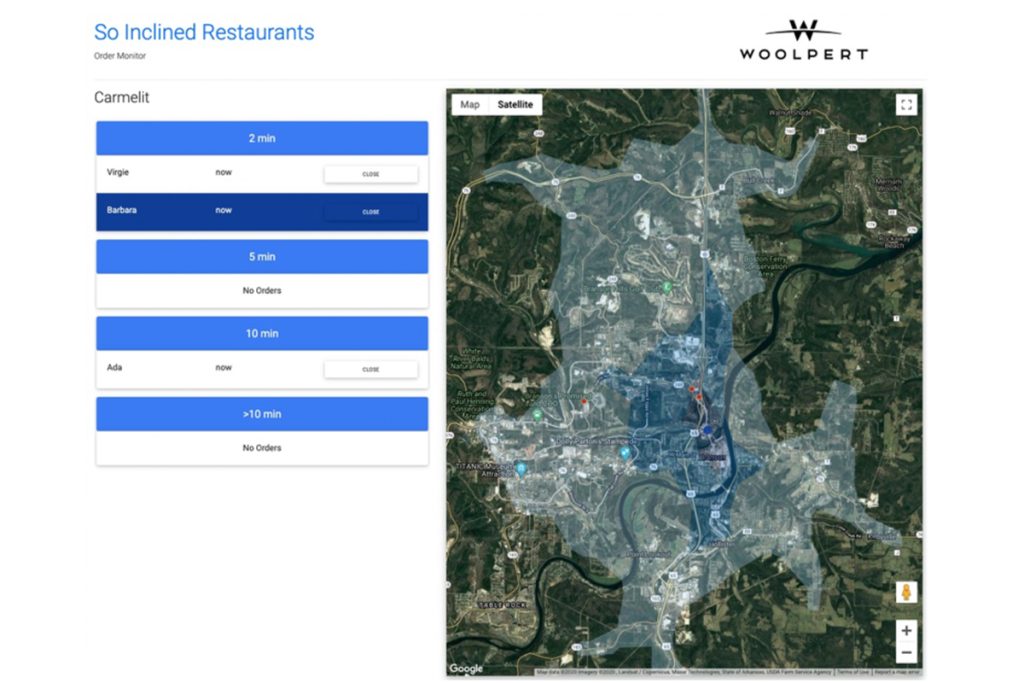The COVID-19 pandemic has changed the way we shop. With mandated stay-at-home orders and generalized concern for exposure to the virus, consumers have increasingly turned to self-service models to buy food, household goods and all sorts of other products. Restaurants and retailers, many of whom are traditionally dine-in/shop-in-store establishments, have been scrambling to meet the increasing demand of BOPIS (buy online pick up in store) and to provide a top-notch experience for their customers. They are faced with a two-fold challenge to streamline internal operations and increase customer satisfaction.
Back in March, I remember thinking through the ways I could continue my family’s weekly restaurant night tradition while restaurants were closed to dine-in customers. There are numerous platforms for placing restaurant orders, including individual websites and mobile apps, as well as food ordering and delivery services like GrubHub, Uber Eats and DoorDash. But basically, it comes down to two choices for getting restaurant takeout food: pick up or delivery.
For the delivery model, the onus is on the restaurant to ensure the food arrives on your doorstep within the general time frame promised. That’s why it often costs more. Many delivery-oriented restaurants have established a routine based on years of in-house practice. The pickup model, on the other hand, has more variables because it is contingent on customer behavior, including how each customer navigates issues like traffic and timing. From a restaurant manager’s perspective, these unknowns make managing the pickup process difficult. You don’t know when the customer will arrive at your restaurant, or if they will arrive at all. Given that, it is more difficult to know when to start cooking each order, when to prepare it for pickup, have it packaged and get it ready to go—while coordinating this for all other orders also coming through.
Enter GeoAwareness. GeoAwareness was built to improve online ordering and curbside pickup. It’s a quick-start solution for capturing customer location data in near-real time to alert a restaurant or store to approaching customers as they cross geofence boundaries. The data indicates whether customers are going to show up and provides their estimated time of arrival, allowing that restaurant or store to prioritize resources and minimize customer wait time.
How does it work? It’s pretty simple. When a customer is ready to head toward a store or restaurant, he or she clicks “Leaving now” on the mobile website where the order was placed. The customer is asked to share his or her location and has the option of requesting directions to the pickup site. Then the location of the customer is paired to the restaurant’s real-time dashboard, which is refreshed periodically as information from his or her mobile device is sent to the Google Cloud Platform (GCP) during the drive to the restaurant.
When customers cross geofence boundaries defined by the restaurant—for example at 2, 5 or 10 minutes away—the restaurant or store clerk receives an alert on the dashboard, which includes an order queue and map, identifying and prioritizing customer ETAs. This cues the fulfillment process. When the customer arrives, the order is ready and can be delivered as he or she pulls into the parking lot, making for a fully automated and pleasant customer experience.
GeoAwareness combines the scalability, reliability and security of GCP with best-in-class Google Maps to provide accurate customer ETAs to meet the volumes of even the largest retail chains when dealing with buy online pick up in store orders. The solution is meant to be deployed into each site’s own Google Cloud project, so each can retain ownership of the platform and the data.
With a breadcrumb trail of a customer’s driving route data, restaurants and retailers also can start asking interesting questions like, “Can I tune the predicted ETAs based on the data?” or “What are the main corridors my customers travel to reach my store, and can I use this knowledge for a geotargeted advertising campaign?” or even “Are my customers passing any competing restaurants en route?” With the analytics and machine learning resources available in GCP and the automation that GeoAwareness provides, restaurants and retailers have the power to answer these questions and any others to help advance their business and improve customer service.
To learn more, we encourage you to experiment with the system, which has been open-sourced, by following the GeoAwareness runbook.
If you need a little more help, Woolpert is here to assist you in standing the system up and integrating with your order management systems. Get started today!



